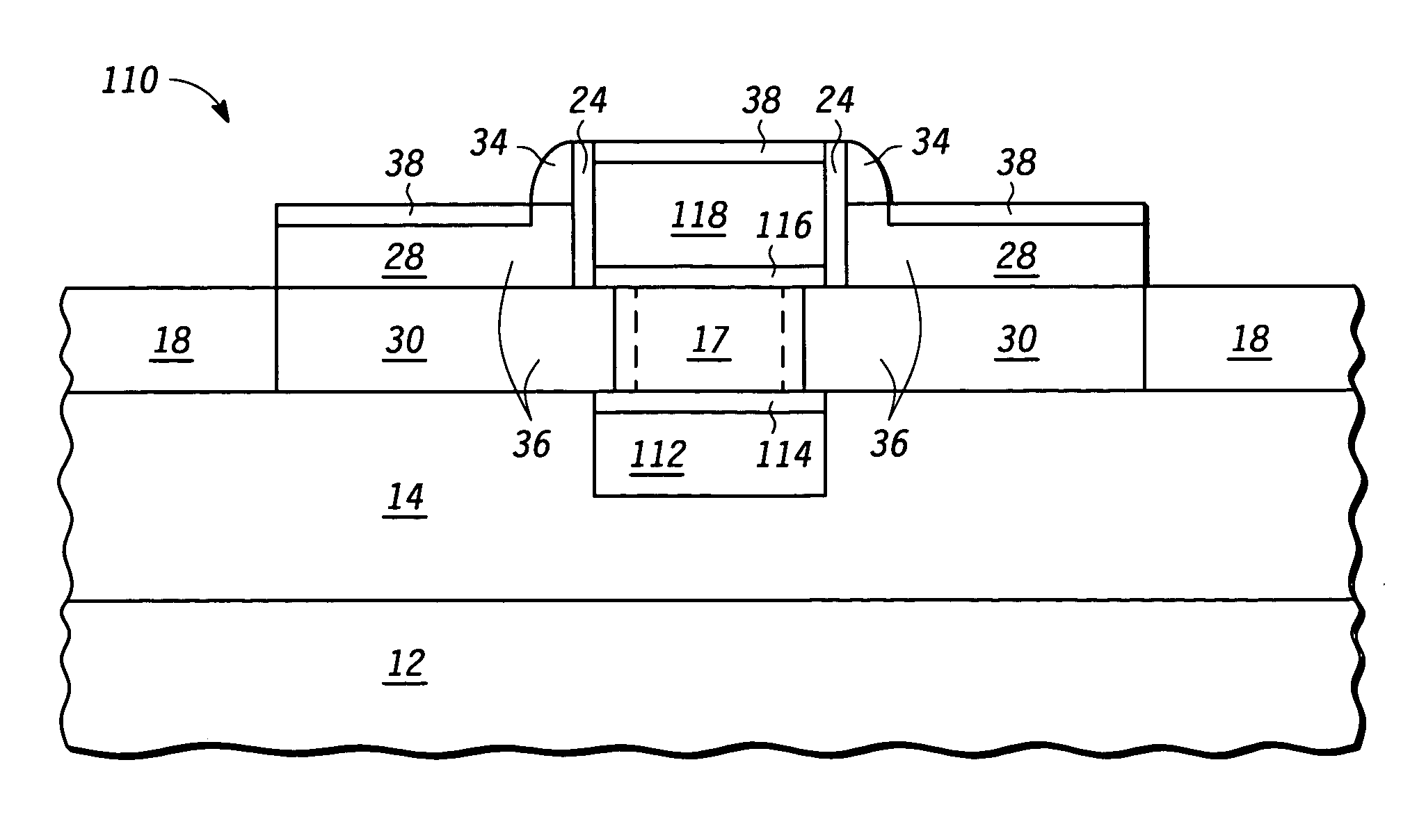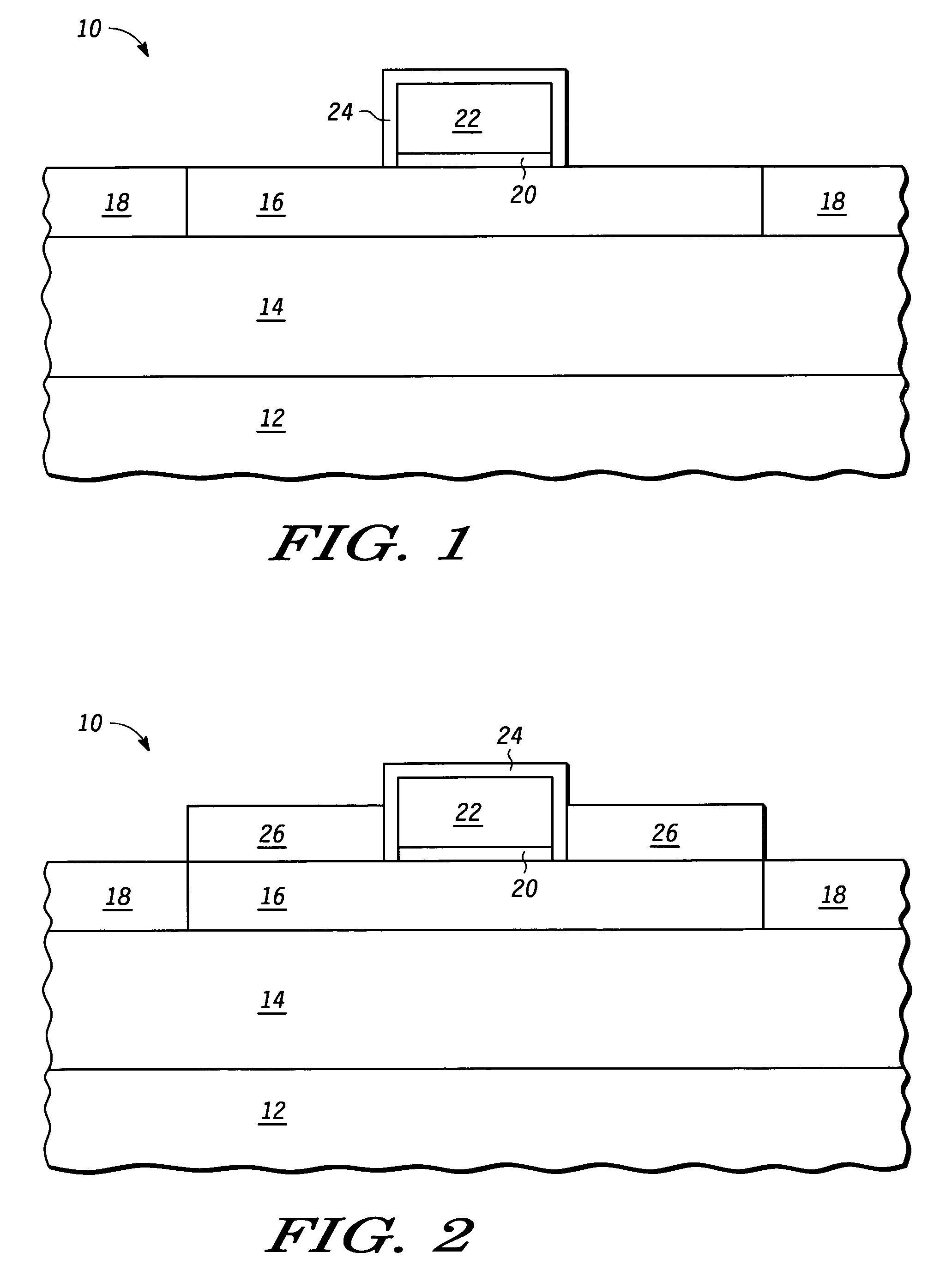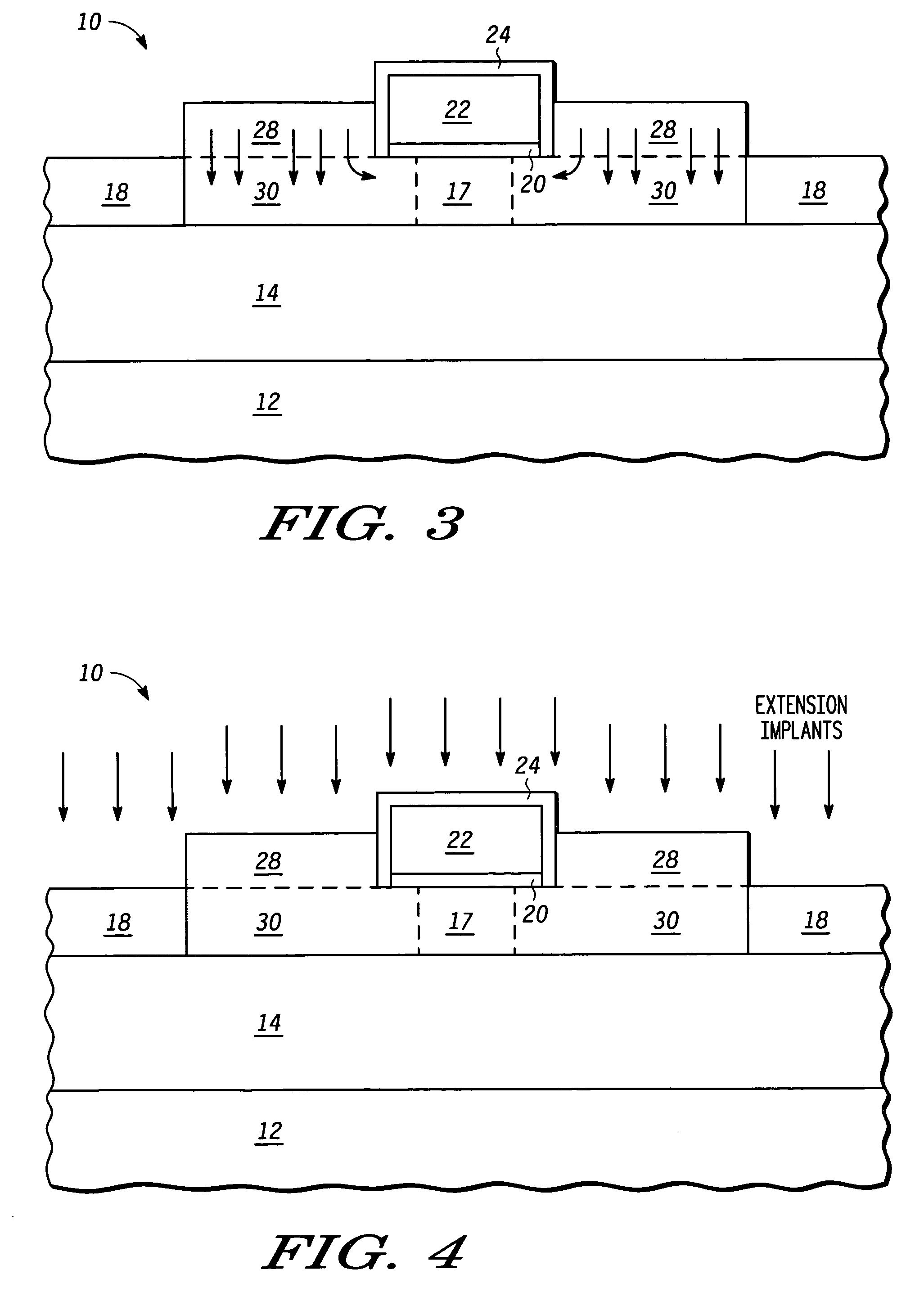Double gate device having a heterojunction source/drain and strained channel
a heterojunction source/drain and channel technology, applied in the field of semiconductor devices having very small dimensions, can solve the problems of uneven device uniformity within the circuit, different scaling challenges, and inability to adequately control the implant structure with conventional semiconductor fabrication equipment,
- Summary
- Abstract
- Description
- Claims
- Application Information
AI Technical Summary
Problems solved by technology
Method used
Image
Examples
Embodiment Construction
[0015]Illustrated in FIG. 1 is a semiconductor device 10 in accordance with the present invention. A substrate 12 is provided. In one form substrate 12 is silicon. However, any semiconductor material may be used. An overlying dielectric layer 14 is formed. Wafer bonding or implantation of an oxygen species material may be used to form the dielectric layer 14. In one form, the dielectric layer 14 is an oxide. A semiconductor layer 16 is formed and patterned overlying a portion of the dielectric layer 14. In one form the semiconductor layer 16 is silicon and has a thickness such that an aspect ratio that is equal to the gate length divided by the thickness of semiconductor layer 16 is at least three. Therefore, semiconductor layer 16 is relatively thin. Adjacent the semiconductor layer 16 is isolation region 18. It should be understood that isolation region 18 may either be a void of material or any dielectric material. Therefore, in one form the isolation region 18 is a void. A gate ...
PUM
 Login to View More
Login to View More Abstract
Description
Claims
Application Information
 Login to View More
Login to View More - R&D
- Intellectual Property
- Life Sciences
- Materials
- Tech Scout
- Unparalleled Data Quality
- Higher Quality Content
- 60% Fewer Hallucinations
Browse by: Latest US Patents, China's latest patents, Technical Efficacy Thesaurus, Application Domain, Technology Topic, Popular Technical Reports.
© 2025 PatSnap. All rights reserved.Legal|Privacy policy|Modern Slavery Act Transparency Statement|Sitemap|About US| Contact US: help@patsnap.com



